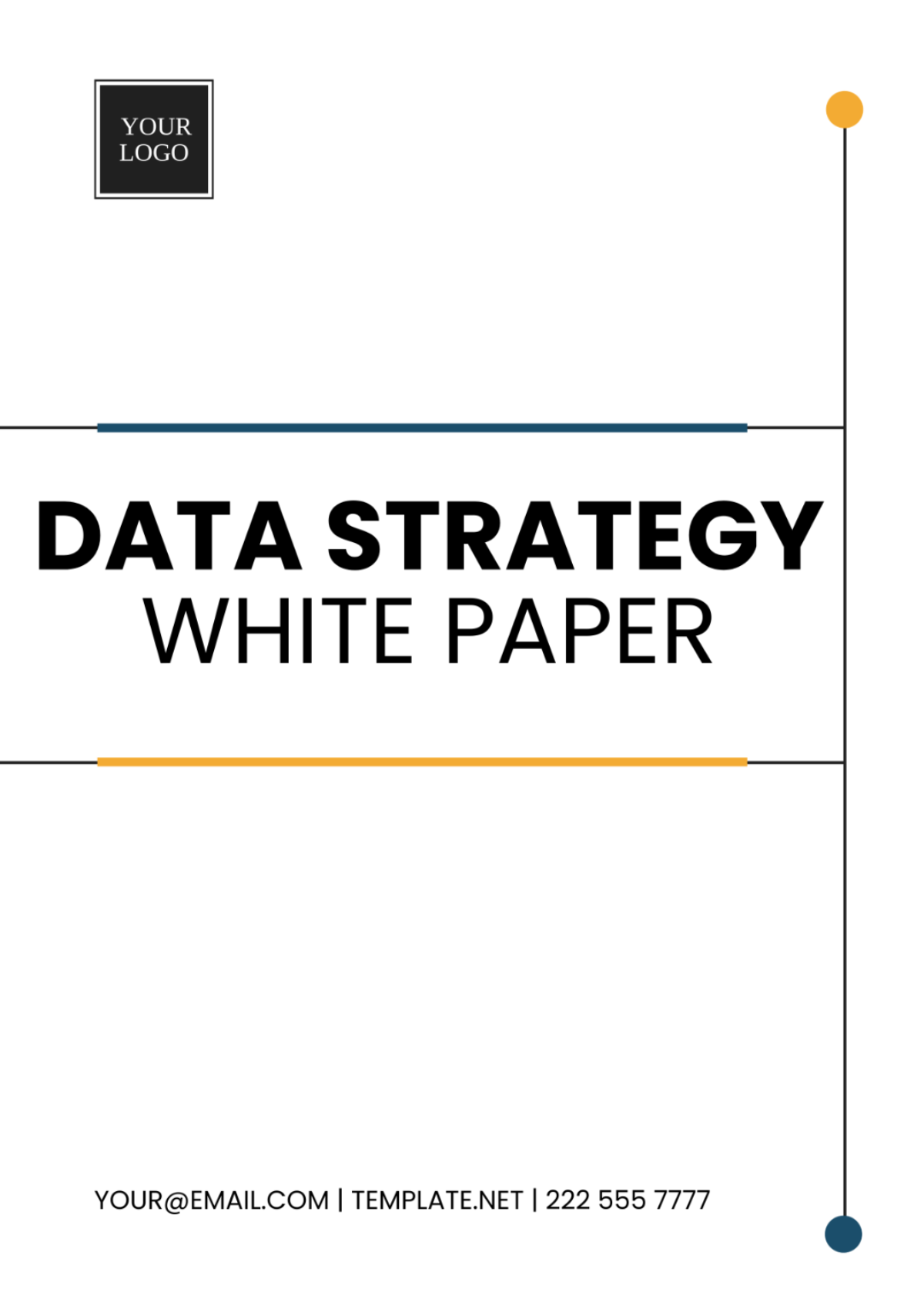Free Data Strategy White Paper

Driving Business Success through Data Utilization
Prepared by: [YOUR NAME]
Department: [YOUR DEPARTMENT]
Date: [DATE]
I. Introduction

In today's data-driven world, organizations are increasingly recognizing the value of strategic data management and utilization. A well-defined data strategy not only facilitates efficient decision-making but also unlocks new opportunities for innovation and growth. This white paper presents a comprehensive framework for [Your Company Name]'s approach to developing and implementing a robust data strategy.
II. Executive Summary
In this section, we provide a high-level overview of the key components and benefits of a data strategy. We outline the critical role it plays in [Your Company Name]'s overarching business objectives and how it aligns with organizational goals.
III. Understanding Data Strategy
A. Definition and Importance
Definition: What is a data strategy, and why is it essential for modern businesses?
Benefits: Explore the advantages of having a well-defined data strategy, including improved decision-making, enhanced operational efficiency, and competitive advantage.
B. Elements of a Data Strategy
Vision Statement: Articulate the desired outcomes and long-term objectives of [Your Company Name]'s data strategy.
Governance Framework: Establish guidelines for data management, compliance, and security.
Data Architecture: Design the infrastructure and systems necessary to support data collection, storage, and analysis.
Data Quality Management: Ensure the accuracy, consistency, and reliability of data assets.
Data Lifecycle Management: Define processes for data acquisition, utilization, and disposal.
Analytics and Insights: Utilize advanced analytics tools and techniques to derive actionable insights from data.
C. Stakeholder Engagement
Identifying Stakeholders: Who are the key stakeholders involved in developing and implementing the data strategy?
Engagement Strategies: Outline strategies for engaging stakeholders and obtaining buy-in for the data strategy initiative.
IV. Developing Your Data Strategy

A. Assessing Current State
Data Audit: Conduct a comprehensive audit of existing data assets, systems, and processes.
Gap Analysis: Identify gaps and areas for improvement in the current state of data management.
B. Defining Future State
Vision Setting: Define the desired future state of data management and utilization.
Goal Setting: Establish measurable goals and objectives for the data strategy initiative.
C. Strategy Formulation
Strategic Initiatives: Identify key initiatives and projects to achieve the goals outlined in the data strategy.
Resource Allocation: Determine the resources, budget, and timeline required for successful implementation.
V. Implementing and Executing the Data Strategy
A. Governance and Oversight
Establishing Governance Structure: Define roles, responsibilities, and decision-making processes for data governance.
Monitoring and Compliance: Implement mechanisms for monitoring data quality, security, and compliance with regulations.
B. Infrastructure and Technology
Infrastructure Deployment: Deploy the necessary hardware, software, and cloud services to support data management and analytics.
Technology Integration: Integrate disparate data sources and systems to create a unified data ecosystem.
C. Change Management
Change Leadership: Provide leadership and support to drive cultural and organizational change.
Training and Development: Offer training programs to equip employees with the skills and knowledge required for effective data utilization.
VI. Measuring Success and Continuous Improvement
A. Key Performance Indicators (KPIs)
Metrics for Success: Define KPIs to measure the effectiveness and impact of the data strategy.
Performance Tracking: Implement systems for tracking and reporting on KPIs to stakeholders.
B. Feedback and Iteration
Feedback Mechanisms: Solicit feedback from stakeholders and users to identify areas for improvement.
Iterative Approach: Embrace an iterative approach to refining and optimizing the data strategy over time.
VII. Conclusion
In conclusion, a well-crafted data strategy is paramount to [Your Company Name]'s success in today's data-driven landscape. By following the framework outlined in this white paper, [Your Company Name] can harness the power of data to drive innovation, enhance decision-making, and achieve strategic objectives.
VIII. References
Provide citations and references for any sources or materials referenced in the white paper.
[Your Name]
[Your Position]
[Your Department]
[Your Company Name]
- 100% Customizable, free editor
- Access 1 Million+ Templates, photo’s & graphics
- Download or share as a template
- Click and replace photos, graphics, text, backgrounds
- Resize, crop, AI write & more
- Access advanced editor
Elevate your data initiatives with the Data Strategy White Paper Template from Template.net. This comprehensive document simplifies the creation of insightful white papers on data strategies, methodologies, and best practices. Crafted for flexibility, it's editable and customizable, enabling you to tailor every detail to your organization's unique data objectives and insights. With our Ai Editor Tool, making adjustments is seamless, ensuring your white paper effectively communicates your data strategy and solutions. Trust Template.net to provide the framework for presenting your data expertise professionally and comprehensively. Simplify your knowledge-sharing efforts and drive data-driven success with confidence, knowing you're supported every step of the way.





























